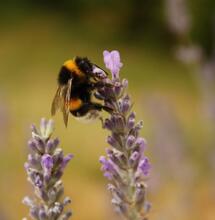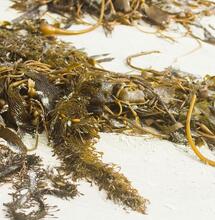The Benefits of Flushing Cannabis Plants

After all your hard work and dedication when growing Cannabis plants, the final two weeks prior to harvest plays a massive role in the outcome of your crop. As we feed nutrients over the vegetative and flowering stage, undissolved salts can accumulate around the roots inside the growing medium. In this article we explain what flushing is, how to correctly do it, the benefits, what to avoid and our top tips to consider.
Why is flushing Cannabis necessary?
Flushing Cannabis plants is an essential part of the grow cycle and will determine the final experience as far as consumption is concerned. How many nutrients are left behind in the flowers will affect how well the joint burns, the color of the ash, how hot and harsh inhalation may be and how unpleasant the flavor will be.
As Cannabis plants pack on weight during a 12/12 light cycle, providing high amounts of Nitrogen, Phosphorus and Potassium combined with a high mineral count of macronutrients, can cause some plants to create an internal reserve that can be expended over a 14-day period.
On one hand, the size and weight of the buds will increase, however finding the right balance between yield and taste is what makes a disciplined grower stand out from a crowd.
- Flushing produces a clean tasting and smooth burning product for consumption.
- The ash will burn with a light gray and soft consistency that leaves no residue.
- Once lit, a well flushed bud will not need lighting again and will burn smooth.
- The ash of the joint will burn evenly and straight down and not side burn the paper.
What is the correct way to flush Cannabis plants?
The easiest way to flush Cannabis plants is to use water and cut off all nutrients. This means that N, P, K and even trace elements should no longer be provided for the plants. As a result, the Cannabis plants late into flower will make one final push and use up their internal nutrient supply.
As a bi-product of that, the growing medium is washed and undissolved salts that have slowly built up over time, are allowed the opportunity to essentially wash away. There is no need to increase the volume of water that the plants will receive, or water more frequently than your usual feeding regime.
Using enzymes is also an excellent way to break down undissolved salts and allow for the growing medium and roots to become cleaned. Enzymes work for plants in the same way we use enzymes for industrial dishwashers, garden ponds and even have them present in our stomachs to break down food. You will still achieve the same result using plain water, however coco growers are able to reuse their growing medium once it is properly washed through with enzymes.
How long do I flush the plants with water?
There should be a time frame of between 10–14 days, and during this time you will see the pigment of the leaves begin to change from green to yellow, purple, orange, red and a wide array of multi colors. Oftentimes, taking a crop a week longer than expected can happen, so flushing for 14–21 days is usually the preferred method amongst old school connoisseurs.
What about flushing with hydroponics?
When it comes to hydroponics, as the plants have access to nutrients 24/7 with most systems, flushing simply requires cutting off the nutrients, and for the final 7 days and ideally providing reverse osmosis water. The reason being the electric conductivity (E.C), is as low as possible and free of any type of minerals. Enzymes are another way to correctly flush your crop when growing with hydroponics.
Top tips for flushing your crop
Top tip #1 - Do not over water the growing medium, and keep giving the same amount of water as you would have when making a nutrient solution mix. So if you have always given each plant 1 liter of water, then stick to this volume.
Top tip #2 - Try and take the flushing stage to at least 10 days if you are in a rush to get the crop down. The longer plants have to flush, then the better the overall smoking experience will be.
Top tip #3 - Using different enzymes at the same time can be an excellent way to ensure the growing medium is clean and coco can be reused if need be. Enzymes are not expensive and make a huge difference.
Top tip #4 - Do not get in the habit of thinking the more nutrients you give, as late as possible, will produce the best quality buds. They may look good in photos, however when smoking will constantly need lighting, and will have a cough inducing quality.
Top tip #5 - Always check on the maturity of the trichomes, as you are flushing the plants with the goal of the harvesting at peak resin and terpene production.
Top tip #6 - Always be vigilant and inspect your buds closely during the final few weeks of the flowering period. This is the time when mold can infect a plant and begin to mold from the inside outwards, which can become a devastating loss.
Conclusion
Flushing Cannabis plants is extremely important and should never be disregarded, especially in the name of profits. You can always tell a badly flushed crop, as the ash will leave a black charcoal residue in the ashtray, and the flavor and aroma when burning can often be described as harsh and not pleasant. On top of needing to light the joint every 30 seconds and a lung tickling cough, the upsides of laying off the nutrients for the final 2 weeks massively outweighs the small increase in final weight. Good luck flushing your plants and figuring out the exact time to flush and harvest, giving you the best quality flowers in town!.



